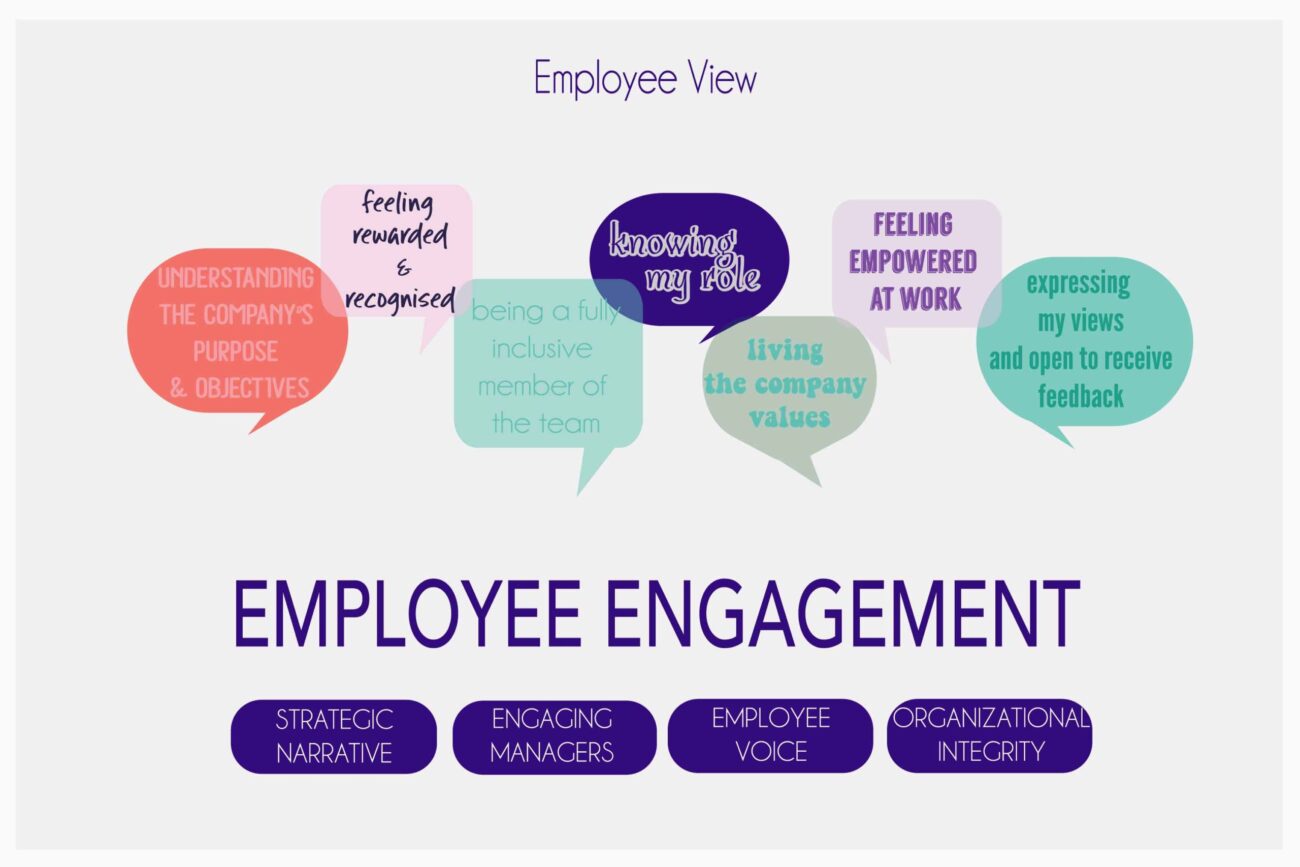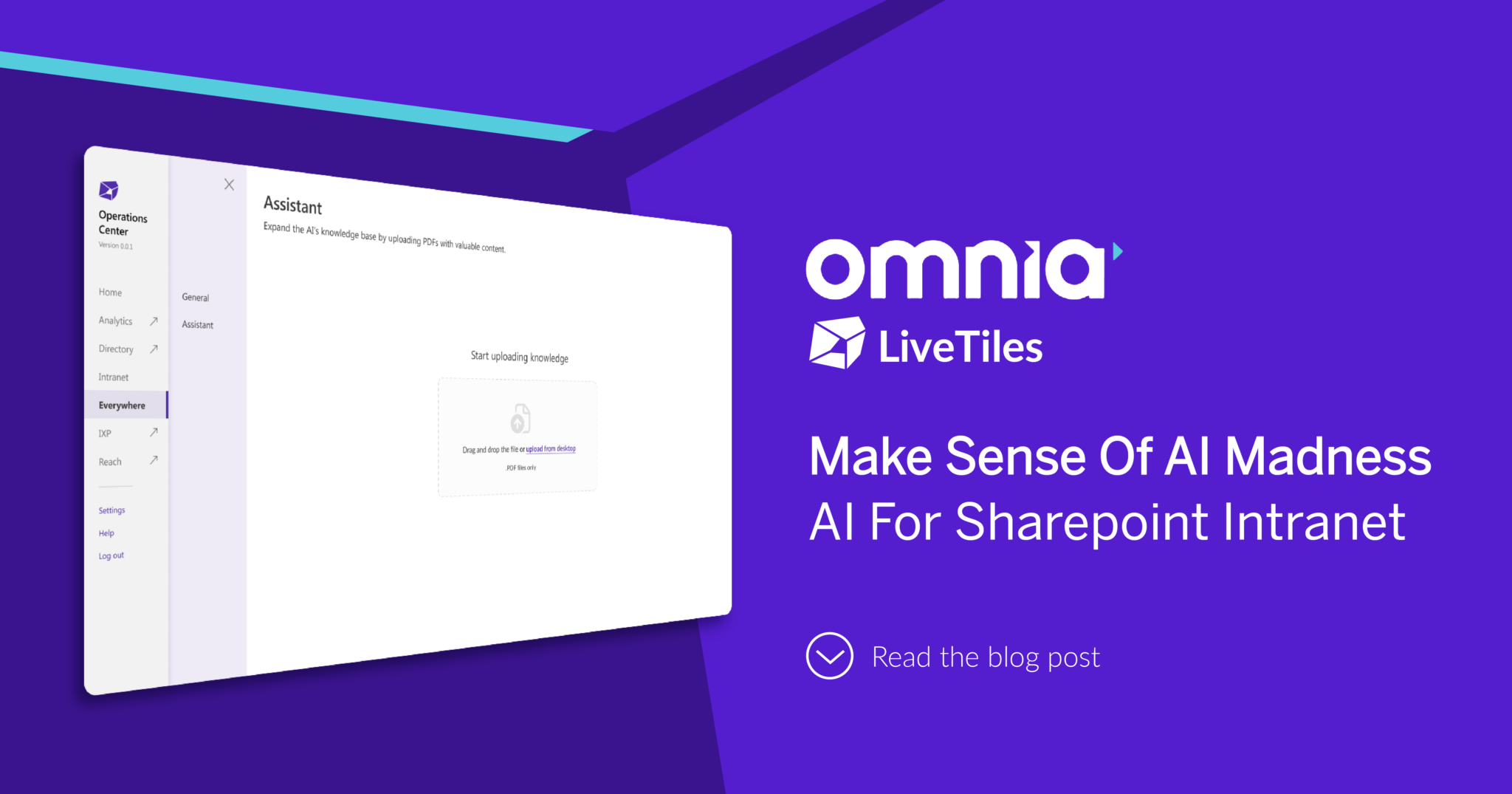Improving employee engagement in the post COVID-era
The following article provides practical advice for HR teams to improve employee engagement through the use of powerful Digital Workplace tools. You can read related articles, covering other timely topics such as employee experience and empowering frontline workers.
Happy, healthy people are the cornerstone of any productive and profitable organisation, which has made gauging and improving employee engagement a holy grail of the HR profession for decades.
Keeping your staff engaged with their job, your customers, and each other has always been an important priority, but never more so than in the challenging environment we’re all facing as we slowly emerge from the shadows of the COVID-19 pandemic.
For many of us, the past 18 months has been one of the most difficult periods in our professional lives, as we’ve navigated the demands of remote work on top of caring for children, elderly parents, and pets. Not to mention the general anxiety that’s come from months living under strict lockdown measures. It’s entirely understandable that people’s motivation and resilience wereas tested, and in many cases proven, as we continued showing up to (remotely) work despite it all.
In this environment, powerful Digital Workplace technology has more than proven its worth in creating a positive employee experience, keeping us connected and productive in ways we never previously imagined. It can also play a crucial role in boosting employee engagement and ensuring your staff feel like they’re part of a bigger team as they move towards more ‘normal’ times once again.

Defining Employee Engagement: Passion and commitment
There are as many definitions for the term “employee engagement” as there isare differing (yet equally valid) advice on how to boost it to unlock your people’s true potential. We particularly like this definition below from CustomInsight – a Silicon Valley based HR solutions provider that works closely with Fortune 500 companies.
Employee engagement is the extent to which employees feel passionate about their jobs, are committed to the organization, and put discretionary effort into their work.
Custom Insight
As you will have noticed, the words “passionate” and “committed” describe the key attributes of an engaged employee. They are someone who is willing to go the extra mile for their employer, because they feel like they belong to something bigger than themselves. They have a sense of ownership over their organisation’s cause or purpose and it acts as an animating force, maintaining their motivation through the inevitable ups and downs of working life.
It’s also worth noting the distinction between employee engagement and employee satisfaction. Whereas an engaged employee will go above and beyond for their organisation, a merely satisfied one may be entirely comfortable in their role yet happy to just collect a paycheck with minimal effort. Which brings us to why employee engagement matters and how measuring and taking solid steps to boost it can pay dividends for your organisation.
Whereas an engaged employee will go above and beyond for their organisation, a merely satisfied one may be entirely comfortable in their role yet happy to just collect a paycheck with minimal effort.
Custom Insight

Why Employee Engagement Matters: The productivity connection
Whilst common sense tells us that having happy, engaged staff is a good thing in general, countless academic studies have proven the hard productivity and financial gains it offers to organisations who get this crucial aspect of their HR puzzle right.
Take for example an extensive 2013 Gallup Workplace study which found an engaged worker achieves on average 21% higher productivity compared to a disengaged worker. This is due to being more focused and motivated, and therefore delivering better customer/client service. In the same study, engaged workers were also found to have 65% lower turnover and 37% lower absenteeism. If this is applied across an entire workforce it could translate into significant cost savings and revenue gains!
In fact, disengaged workers are likely to cost their organisation money, with later Gallup Research from 2017 quantifying the price of disengagement in the United States as high as a stunning $550 billion per annum in lost productivity.

HR professionals and senior leaders are well aware of this challenge, especially given the strong links between healthy employee engagement and higher productivity. 71% according to a HBR study ranked employee engagement as very important to achieving their overall organisational success, however only 24% rated their employees as being highly engaged. This closely mirrors a general breakdown of engagement levels across a typical global company:
- Engaged (15% of the workforce)
- Not Engaged (67% of the workforce)
- Actively Disengaged (18% of the workforce)
The Four Elements of Employee Engagement
With the challenge of improving employee engagement and the benefits it can bring to an organisation well established, it’s now time to delve a little deeper into the four key elements that drive engagement. These are divided between the organisational and manager factors that directly impact upon an employee’s experience of their job:

Organisational Factors
Organisational factors measure how engaged an employee is with their organisation as a whole, including the performance of senior management and its broader culture.
1. Culture of Engagement
Does your organisation have an open and welcoming culture that respects staff and empowers them to do their job to the best of their abilities?
2. Strategic Alignment
Do your staff understand where your organisation is heading (its strategic direction) and how they as individuals can contribute to its success, as well as developing their own careers?

Manager Factors
Manager factors focus on the relationship between an employee and their direct supervisor. This examines how the supervisor’s approach impacts the employee’s ability to perform their job effectively. In other words, it assesses how well the manager supports, motivates, and guides their team members.
3. Motivating and Relating
Do managers listen to their direct reports and motivate them to perform to the best of their abilities? Are they building strong, cohesive teams that can openly share ideas and support one another?
4. Managing Execution
Employee engagement depends heavily on clear communication from managers. Do they define roles and responsibilities effectively, giving employees the guidance and autonomy they need to excel? Timely feedback is also essential.
Research shows that feeling like they belong to both their team and the wider organisation motivates employees and leads to higher productivity. A positive company culture fosters this sense of belonging and encourages open communication across all levels. This is where digital workplace technology like intranets and employee app tools become valuable assets. We’ll explore these tools in more detail in the final section.

How to Improve Employee Engagement?
5 practical tips for your organisation
We’ve just spoken a lot about what employee engagement is, why it matters for productivity, and the elements that drive engaged employees. Now we’re finally ready to dive into some practical solutions for improving employee engagement that your organisation might consider. Our advice begins with first measuring how your staff are currently traveling – especially important at a time when remote work is the norm, before suggesting powerful Digital Workplace tools that can be used to foster a great employee experience that keeps people connected and motivated to a bigger purpose.
1. Use regular pulse checks
As the saying goes, “what gets measured gets managed,” and employee engagement is no exception. Short, regular surveys like pulse checks offer a quick way to gauge engagement at both individual and team levels. This data provides valuable insights into employee sentiment. By using this information to identify and address any emerging issues, you can keep your workforce engaged and feeling heard.
Find the right tool for the job. LiveTiles Reach lets you get a quick team-wide update and check in with minimum fuss. Its shorter than a survey, faster than a meeting, and more fun than a text.

2. Unite your workforce through regular communication
In this post COVID-era hybrid work is the new norm, with some of your staff working from home whilst others are in the office. In many organisations, you will have some or all staff working remotely all the time. Whatever your setup, clear and effective internal communications is key to keeping your people up to date with company news, events, policies and procedures, and each other. Powerful intranets with app-based extensions can play this role, offering a single source of truth for your people, keeping them connected to what’s happening across their organisation whilst maintaining your crucial company culture. The right tool for the job: LiveTiles Reach – an internal communication tool and pocket intranet that boosts engagement, retention, and connection for all employees regardless of where they work.s productivity maintained across many organisations throughout the long months of lockdown and mass remote work, in many cases it actually improved, especially for knowledge workers according to the Harvard Business Review study. Other studies including from the BBC and Bloomberg place these productivity gains – from less time wasted commuting to fewer distractions from chatty co-workers – anywhere between 5-13%.
The forced remote work experiment had surprising benefits for employees despite the isolation. Many workers are eager to still work at least a few days a week from the comfort of their home.

3. Clearly define roles and responsibilities
Clearly define staff roles and connect them to company goals. This boosts engagement and ownership. Communicate role details and expectations during onboarding. House this information permanently on an easily accessible intranet page.
Find the right tool for the job. Use LiveTiles Directory to know your people by automating the entire collection of personnel data. Create a rich skills/people finder with role-based content targeting and effective process automation.

4. Focus on wellbeing
One of the big positives to come out of the COVID-19 experience of 2020 is the prioritisation of employee wellbeing. It’s not only something that is nice to take care of but also an important determinant of organisational performance. Employee health and well-being are a top priority now. Simple steps like regular team huddles, whether virtual or in-person and encouraging walks outside can significantly improve engagement and strengthen company culture. These are quick wins that benefit both employees and the company as a whole.
Find the right tool for the job. LiveTiles Reach is an internal communication tool and pocket intranet. It boosts engagement, retention, and connection for all employees regardless of where they work.

5. Don’t forget to have fun!
Celebrate wins with your staff. Commiserate setbacks together. Host casual Friday chats. Productivity matters, but so do human connections. Shared moments build company culture. This boosts employee engagement!
Keen to learn more about enhancing employee engagement with our powerful LiveTiles employee experience platform? Get in touch with us today!








